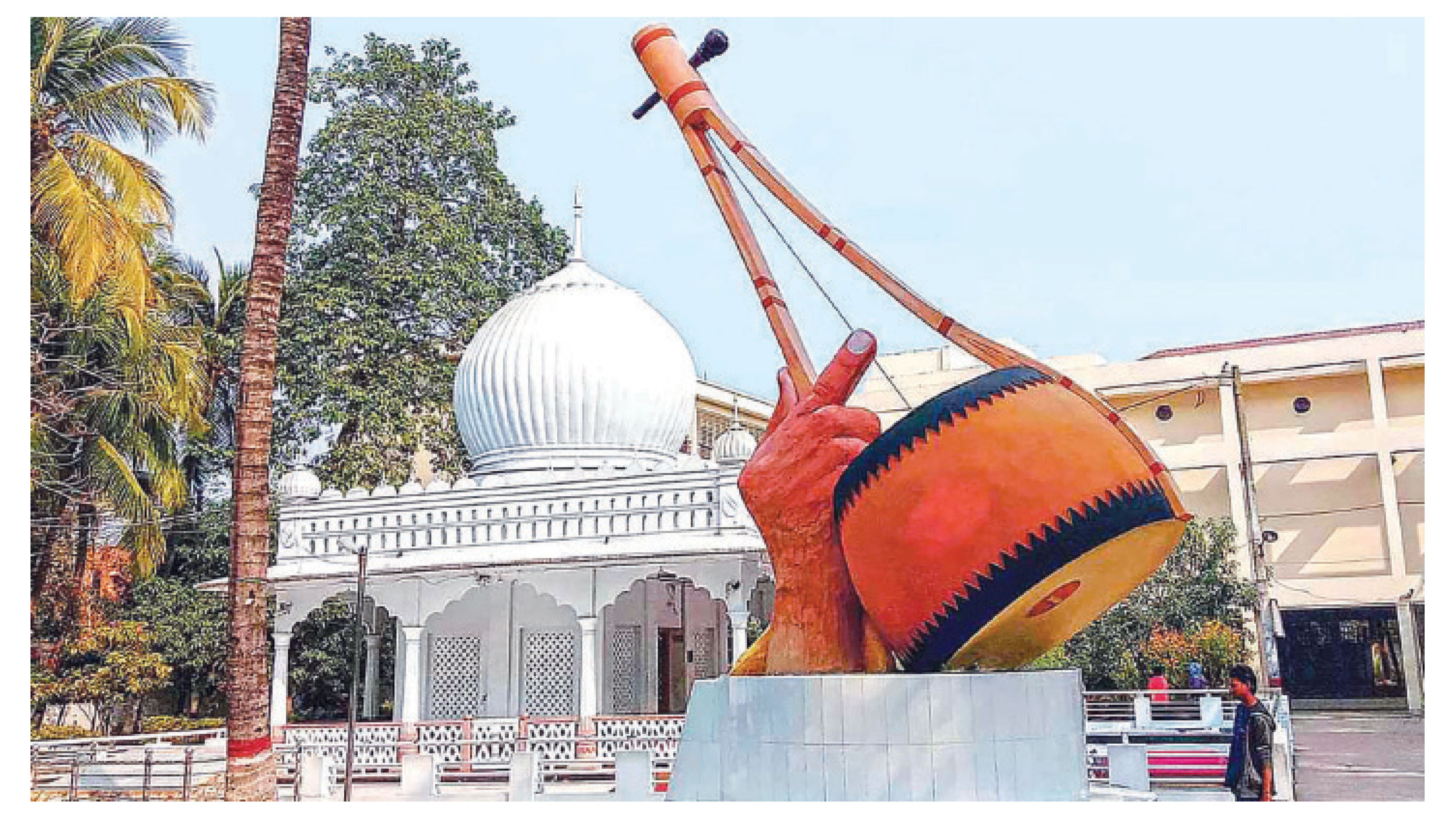
Md. Ziaul Haque Howlader
Lalon Shah, also known as Lalon Fakir, is a prominent Bengali mystic philosopher who composed a large number of songs to spread message of humanity and devotion.
His disciples called him ‘Shai Ji’ out of their love and respect for him. Man and society are the basic tenets of Lalon songs. Lalon was against all social discriminations and classifications of status among human beings. He believed in the presence of God’s light in human minds.
Lalon denounced caste distinctions and sang against it in this way- “Sab lokey koi Lalon ki jat songsare /Lalon koi jater ki rup ami dekhlam na ei nojore (People ask as to what caste does Lalon belongs to in this world? / Lalon says, what does ‘caste’ look like? I have never seen it with my eyes).
Lalon songs are widely popular among both Hindu and Muslim communities due to their non-sectarian spirits and universal urge. His songs like ‘Khanchar bhitar achin pakhi’, ‘Barir kachhe Arshi Nagar’, ‘Amar Gharkhanai ke biraj kore’ etc. are some invaluable treasures of Baul theosophical literature.
Songs of Lalon Fakir are rich in artistic skills and are composed in a simple language. Lalon used to compose his songs orally and his disciples used to memorise them and sing them.

In his lifetime, a large Baul community developed consisting of his disciples and others. Lalon songs became largely popular among the common people of Bengal. Even today, his songs are popular. His disciples like Kangal Harinath Majumder, Dudu Shah, Pagla Kanai etc. earned reputation as composers of baul songs.
According to Lalon Academy, Lalon composed nearly two thousand and five hundred devotional songs. Some sources also claim that some of his disciples collected and compiled his songs later.
Meanwhile, Nobel laureate poet Rabindranath Tagore collected a manuscript of Lalon's songs from Lalon's Akhra at Chheuriya and collected some 298 songs therefrom. He selected 20 songs out of them and had them published in Prabasi magazine. In his written speech on Chhanda (prosody) in Calcutta University in 1341 BS, Rabindranath highlighted the prosody of three songs of Lalon.
Besides, in his lectures like ‘A Religion of Man’ (1930) at Oxford University, ‘An Indian Religion’ in France, and in the preface of the book titled ‘Haramoni of Mansuruddin’ (Poush 1334), Rabindranath gave an explanation on religion and philosophy with quotations from various songs of Lalon Fakir. Thus, Rabindranath for the first time drew the attention of the educated class of the country and of the world people to the songs of Lalon Shah.
Lalon Shah was born in the year 1772 or 1774 and died in 1890. It is not known for certain whether he was born of a Hindu family or a Muslim family. According to different sources, Lalon’s fellow-travelers left him behind after he had small pox. Then, Siraj Shanyi, a Muslim Fakir took him home, nursed and cared him. Later on, Lalon became a Baul and founded a monastery in Chheuriya and began living there along with his wife and disciples.
Another narration informs that Lalon set out for Jagannath Mandir (temple). He had small pox on his way and his fellow-travelers deserted him on the bank of the Kaliganga River. Meanwhile, Malam Shah and his wife Motijan looked after him and brought him round through nursing and care. Malam Shah taught him Islam and gave him a piece of land. Then he organised a group of songsters and began practicing music there.
Today, Lalon Academy and Shrine located on the bank of Gorai River at Chheuriya village in Kushtia district is known across the globe for disseminating Lalon's philosophy and spreading his message of humanity. Earlier, there was a shrine and a small monastery. In 1963, devotees of Lalon's philosophy established Lalon Folk Literature Centre in Chheuriya.
Later in 1978, Lalon Folk Literature Centre was abolished and Lalon Academy was established there by the initiative of Shilpokala Academy. People interested in Lalon’s songs and philosophies find opportunities to carry out their research here. There is also a library and a museum at the academy.
Every winter, a great festival is held at Chheuriya village. A large number of Lalon-devotees and admirers participate in this festival. Moreover, every year Lalon Mela is held here. The instruments used to present Lalon songs include ektara (monochord instrument), dotara (double-stringed instrument), tambourine etc.
Lalon songs are still the source of much inspiration for spreading humanity across the globe. According to many devotees, Lalon’s songs are timeless; their messages are always contemporary, and his philosophy is powerful. Some address him as ‘mahatma’ (great soul). Considered as an archetypal icon of Bengali culture, Lalon inspired many poets and thinkers including Rabindranath Tagore, Kazi Nazrul Islam and Allen Ginsberg.
_____________________________________
The writer is the General Manager (Planning), Bangladesh Parjatan Corporation

